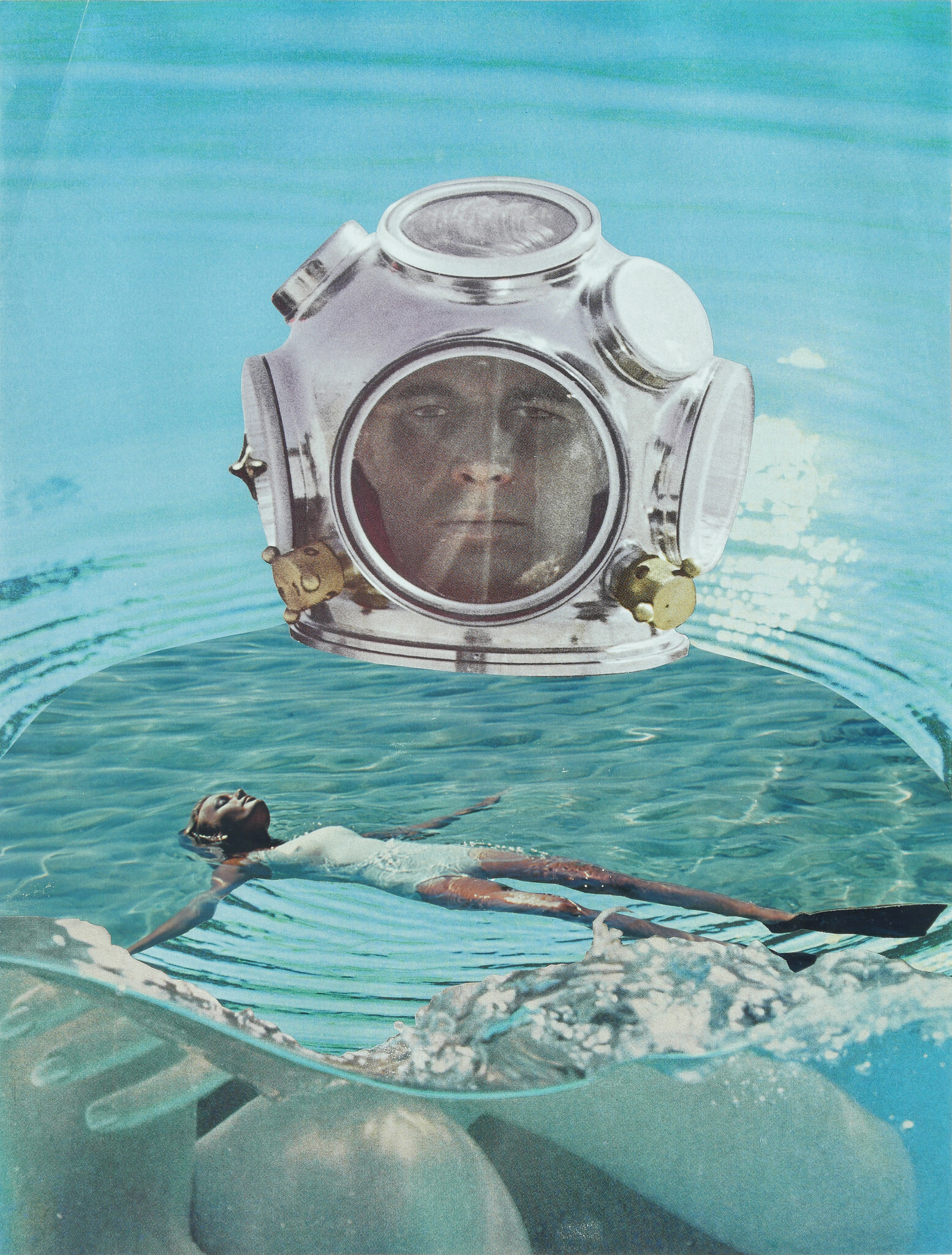Collage
May 6–September 25, 2022
110 S Market Street
San Jose, California 95113
United States of America
Hours: Thursday 4–9pm,
Friday 11am–9pm,
Saturday–Sunday 11am–6pm
T +1 408 271 6840
info@sjmusart.org
The San José Museum of Art (SJMA) presents the first museum solo exhibition of San Francisco-based artist Jean Conner (born 1933, Lincoln, Nebraska), bringing long-overdue recognition to the 88-year-old artist’s extraordinary work. Jean Conner: Collage features collages from the 1950s to the present and highlights Conner’s whimsical imagination and clever critiques of mass media representations of women, war, and the environment. It includes rarely seen materials from the Conner Family Trust, new acquisitions by SJMA, and works from public museums and private collections.
“Although Jean Conner spent most of her six-decades long career alongside an avant-garde circle of artists in San Francisco, like her husband Bruce Conner and Joan Brown, Jay DeFeo, Wally Hedrick, George Herms, and others, her art practice was largely unrecognized. It is unlikely that she could have ever imagined that her reputation would grow so much in recent years,” said S. Sayre Batton, Oshman Executive Director, SJMA. “It is a privilege to share Conner’s life and artistic practices with audiences and show how her signature style was inspired by the world around her. This exhibition reinforces the Museum’s commitment to showcase the remarkable artistic achievements of women artists.”
Paper collage represented the majority of her output since she moved to San Francisco in 1957. Conner’s early collages include newsprint and paint in abstract compositions, and her more figurative works of that decade, such as Nixon (1959), were made from black-and-white images. Her approach to making art from everyday objects and images was echoed in the culture around her: the Beat Generation artists in San Francisco who embraced an ethos of experimentation and rebelled against traditional art practices and economic materialism. Resourceful and unconventional, these artists practiced assemblage through various mediums such as photography and sculpture.
By 1960, she was using color magazines almost exclusively. She would create seductive and humorous scenes from images cut out of large-format magazines, exploring the aspirations and fears of postwar modern life as they were reflected in publications such as Life Magazine and Ladies’ Home Journal. Conner reveled in color and figuration, depicting flamboyant scenes as excessive and strange as the era’s advertisements, as in Tomato Soup (1960), a bold, crimson collage in which a spoonful of tomato soup doubles as a looking glass for a manicured finger applying matching ruby lipstick.
Her observations of technological advancements can also be read in such works as Adding Machine (1969), in which synchronized dancers spring from a computer’s numbered keys in an orchestrated explosion superimposed over a scene of war-wrought destruction. Strange ecologies emerge in Octopus (1982), which shows a reef diver overcome by a giant octopus rising from a swamp, as a blue shark swims across a blue sky.
“Conner constructs fantastical, lurid compositions in her collages. Her vivid, pictorial worlds feature animals and nature, religious rituals, dancers, divers, and food with a keen eye to art history. She draws on surrealism and a history of collage that predates the 20th-century avant-garde—used as both a subversive tactic and a domestic pursuit—to create uncanny pictures that render the incredible believable and unsettle the mind,” said Rory Padeken, curator and manager of publications, SJMA.
Publication
Published by SJMA, a full-color catalog titled Jean Conner: Collage (2021), accompanies the exhibition. It is the first monograph of Jean Conner and presents new scholarship on the artist. Edited with an introduction by Rory Padeken, curator and manager of publications, SJMA, the catalog features contributions by Rachel Federman, Associate Curator of Modern and Contemporary Drawings at The Morgan Library & Museum; and Kathryn Wade, former assistant curator, SJMA. Their essays will situate Conner’s work among her artistic peers and within the pre-modern histories of collage. The book will also feature lush color reproductions of Conner’s collages, many previously unpublished, and an illustrated biography with photographs of the artist throughout her life compiled by Robert Conway, the Conner Family Trust.






